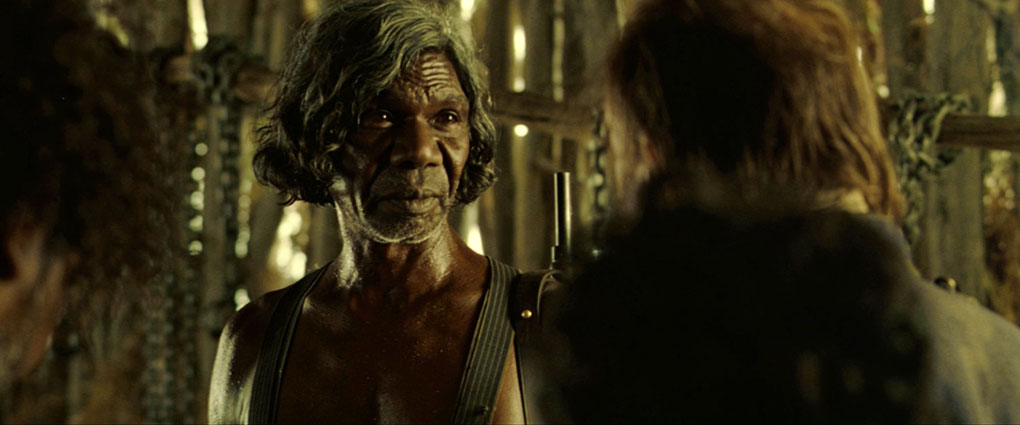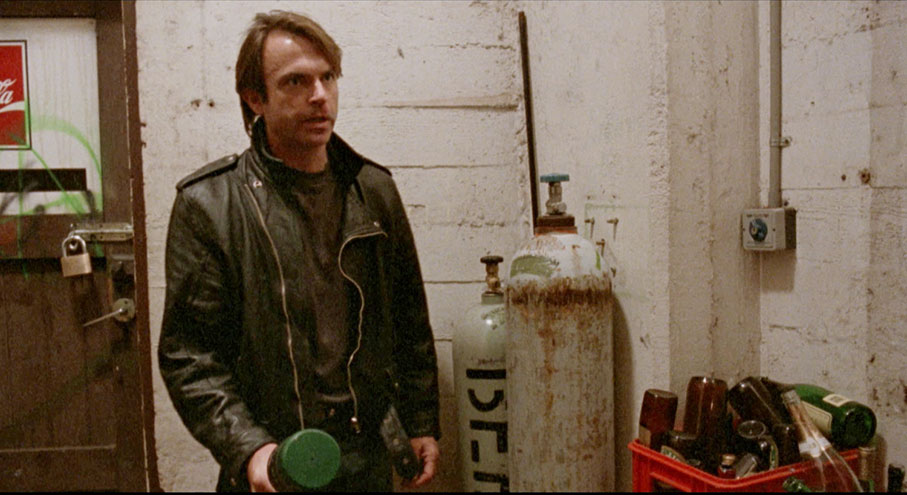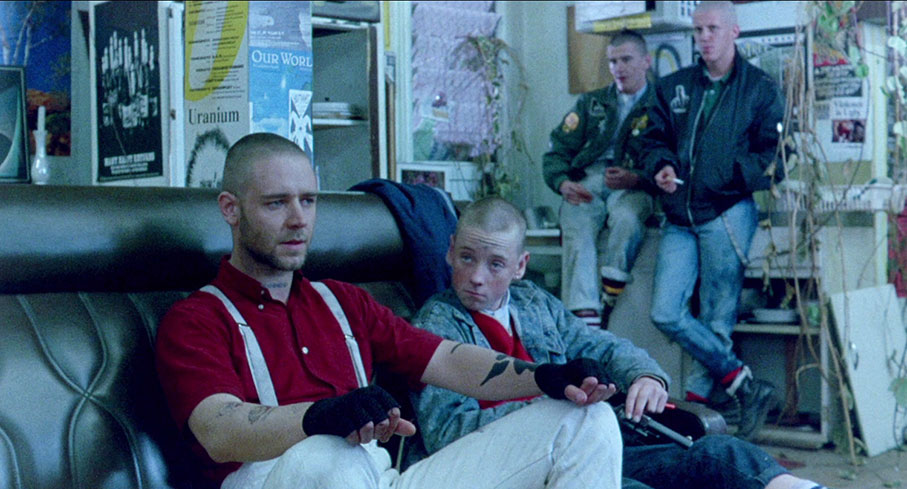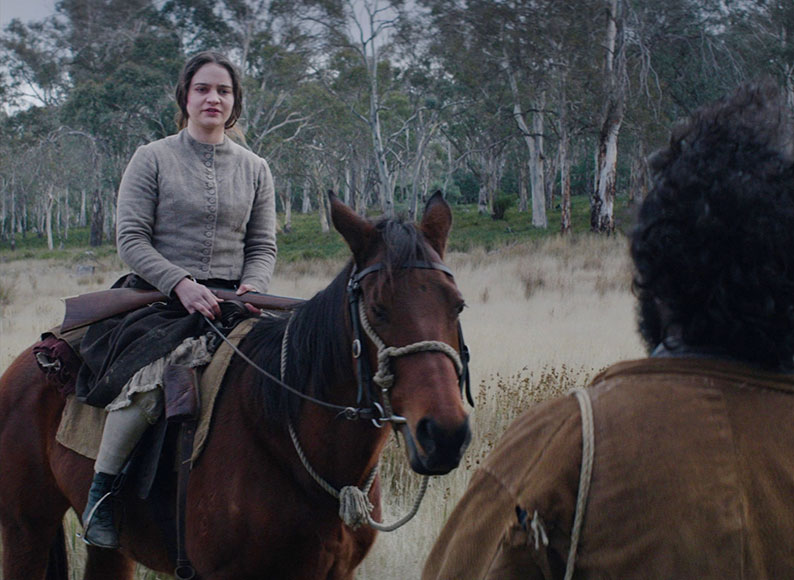|
I have reviewed many Australian films, from all eras and genres, for this site and before then others. I’m not Australian – I wasn’t born there, have never lived there, and indeed didn’t visit before 2010 – but I can certainly call myself an Aussiephile Brit, and the country and its culture was an interest gained in my teens. Interests gained at that age often stick and for me this one has done. A major part of that interest was formed through the country’s film industry. I saw my first Australian film in 1977: The Overlanders (1946), the first of Ealing’s five films shot wholly or partly in Australia, as part of BBC2’s big season devoted to Ealing. Walkabout (1971) followed, on its second BBC showing in 1979. But what really started the interest which continues to this day more than forty years later, were the several Australian films seasons that BBC2 put on in the 1980s. The first one, in 1982, began with the UK television premiere of Picnic at Hanging Rock (1975), and the seasons as a whole showcased many of the major titles of the revival of Australia’s film industry the previous decade. And David Stratton’s book about that decade, The Last New Wave (1980), was a key text for me. In fact, The Overlanders was the first Australian film he saw too, though in his case this was on the film’s UK cinema release when he was six years old.

The Proposition (2005), directed by John Hillcoat
In various roles Stratton has been part of Australian cinema since the mid-1960s. He became the director of the Sydney Film Festival in 1966 and stayed in post for seventeen years. Stratton has given lectures and run courses on film. He reviewed in print for Variety and more recently The Australian. His double-act on Australian television with Margaret Pomeranz made them the public face of small-screen film reviewing for those of a certain age, in much the same way as Siskel and Ebert were in the US and Barry Norman in the UK. Yet he was born in England, in 1939. With his father away at war and his mother volunteering for the Red Cross, he was brought up by his grandmother, and his love of cinema derived from her as she took him there regularly. Expected to move into the family grocery business in peacetime, he instead left for Australia as a “Ten Pound Pom”, a scheme which gave cheap passage to the other side of the world as long as you committed to stay there for at least two years. He didn't return. Much of this is related in the documentary David Stratton: A Cinematic Life (2017), with a related television series David Stratton’s Stories of Australian Cinema (also 2017). In 2008 he published an autobiography with the certainly eye-catching title of I Peed on Fellini (explained therein).
The Last New Wave covered the 1970s Australian Cinema Revival, It began with precursors to that revival, such as the attention given to the filming of Michael Powell’s They’re a Weird Mob (1966) and its subsequent commercial success leading to calls for funding for local film production. It covers the early success at the box office of the “ocker comedies” (Stork,1971), The Adventures of Barry McKenzie (1972), Alvin Purple (1973)) and the critical attention gained by as Sunday Too Far Away (1975) and Picnic at Hanging Rock. The book is mainly organised biographically, with chapters on the key directors of the decade, interviewed by Stratton, some no longer with us. This is a pretty standard list, though Stratton was not to know that Tom Jeffrey would not direct another film after The Odd Angry Shot (1979). Stratton also covered the filmmakers coming out of film school such as Phillip Noyce and Gillian Armstrong, some directors who had made just the one feature in the decade (George Miller with Mad Max (1979) being one), more intentionally commercial fare such as the early stirrings of what would now be called Ozploitation, the experimental micro-budget scenes in Carlton (Melbourne) and Sydney, and so on. The book is a testament from someone who was there at the time. Every fiction feature film (of over an hour) is reviewed. No documentaries, which would no doubt require books of their own. There’s a detailed filmography at the back.

Death in Brunswick (1990), directed by John Ruane
The Avocado Plantation, subtitled Boom and Bust in the Australian Film Industry, followed in 1990 and it’s a noticeably larger book because its subject matter expanded during the 1980s. Many of the leading names of the 1970s went to work in the USA. However. such initiatives as the 10BA tax incentive led to many more feature films being made in Australia, often aimed at the growing home video market. This wasn’t always a blessing, though much Ozploitation was made this way. Instead of devoting the bulk of his book to individual directors, Stratton devotes his chapters to particular genres and themes and again every dramatic feature made for cinema release (even if many didn’t actually achieve one) is reviewed, occasionally briefly, and there is another detailed filmography at the back. As this is another book written by an insider, Stratton sometimes becomes a character in his own story. For example, producer Antony Ginnane (maker of many an Ozploitation movie and an advocate of a more commercial industry aimed at international audiences) blames Stratton’s Variety review of Turkey Shoot (1981) as a “sadistic bloodbath” for the film’s banning in Malaysia. Stratton in his Sydney Film Festival days was a campaigner against film censorship which at the time in Australia was likely the most draconian in the free world. That didn’t prevent him speaking out against films he found problematic, of which more below. Unfortunately the book was not commercially successful and his growing commitments on television and elsewhere prevented Stratton from producing follow-ups covering the 1990s and later decades, in which a lot happened. Until now.
Australia at the Movies has the air of a last testament as it may well be Stratton’s last book. His television show with Pomeranz, At the Movies, ended in 2014. In 2023 Stratton retired from print reviewing, having been at The Australian at weekends for thirty-three years. As of this writing, he is eighty-five. So there is a sense of unfinished business and here we have three decades’ worth, ending more or less with the hiatus in cinema-watching enforced by Covid-19.

Romper Stomper (1992), directed by Geoffrey Wright
Even in a book running 789 pages (187 of which are the A-Z filmography), there’s a lot to pack in, some 650 films by all accounts. As with The Avocado Plantation, the chapters, thirty of them, discuss a particular genre or theme. Examples of the latter include a chapter on indigenous stories, including the rise of aboriginal filmmakers (Wayne Blair, Rachel Perkins, Ivan Sen, Warwick Thornton and others), rather than their stories being told, if more or less sympathetically, by white filmmakers. Another chapter deals with multicultural stories, non-First-Nation ethnic minorities. We also have chapters on relationships (familial and sexual separately), one on “sports stories, oddball characters and shared accommodation”, one on antisocial behaviour (such as Romper Stomper, see below), films directed by actors, experimental films and two on coproductions set in other countries. Some of the subjects are too big for one chapter, so there are two on urban crime and three on comedies. The chapters don’t review the films in any kind of chronological order, starting with the most prominent examples and going from there. You can’t track the careers of individual directors or actors other than going through the filmography, which has the page number where each film is reviewed. (With the e-book version, which is how I read it, you can of course also search for names or titles.) No doubt for reasons of space, the filmography doesn’t have the short plot synopses that its equivalent in The Last New Wave and The Avocado Plantation did. The book ends with an appendix by producer Sue Milliken on the financing of Australian films, likely a little dry for many readers but a vital part of film production often overlooked in many books on the subject.
The potential classics, cult favourites and many otherwise excellent films which came out of Australia in this era are all covered. Stratton also covers many films which are seriously obscure now, some hardly released commercially. As before, he excludes those under an hour and doesn’t cover documentaries. (He did review Paul Cox’s Vincent: The Life and Death of Vincent Van Gogh in The Avocado Plantation, but that was a special case.) Birth and death years are given for people where appropriate, sometimes more than once.

The Nightingale (2018), directed by Jennifer Kent
As before, being the industry insider that he is, Stratton is a character in his own story. I didn’t know, for example, that he had been offered the villain role in Philip Brophy’s Body Melt (1993). In other places he addresses controversies of which he had been part. He recognised the skill and talent in Romper Stomper (1992) but found the film irresponsible, and when it came up on his and Pomeranz’s film programme (then The Movie Show) he declined to review it and to give it a star rating. (The film’s director, Geoffrey Wright, took exception to this and threw a glass of wine over Stratton at a party.) Another example was Wolf Creek 2 (2013). After distinctly disliking the first Wolf Creek, he and Pomeranz didn’t review the notably more bloody sequel. (Stratton explains that the film had been modified since he saw it at the Venice Film Festival and he and Pomeranz, who hadn’t seen that screening, were not disposed to watching it again.)
As with any critic or reviewer, finding out their tastes and biases is a vital part of reading or listening to them. That applies at all levels, certainly including us at Cine Outsider. Stratton’s reviews are of value at the very least due to the fact that he was there, as of course by now many figures of Australian cinema of the time who are still alive are elderly now. So Stratton’s three volumes are a history of his adopted country’s film industry told at first hand. While I certainly don’t always agree with him, his reviews are usually clear and generally sensible. He’s an intelligent middlebrow, which is a reason why he worked so well on television, as Barry Norman did here in the UK. It’s a pity that he didn’t produce one-a-decade books, enabling him to spend more space on the films he described, but that ship sailed long ago. As a final testament from one of the last remaining writers on film born in the 1930s, this book does very well.
|